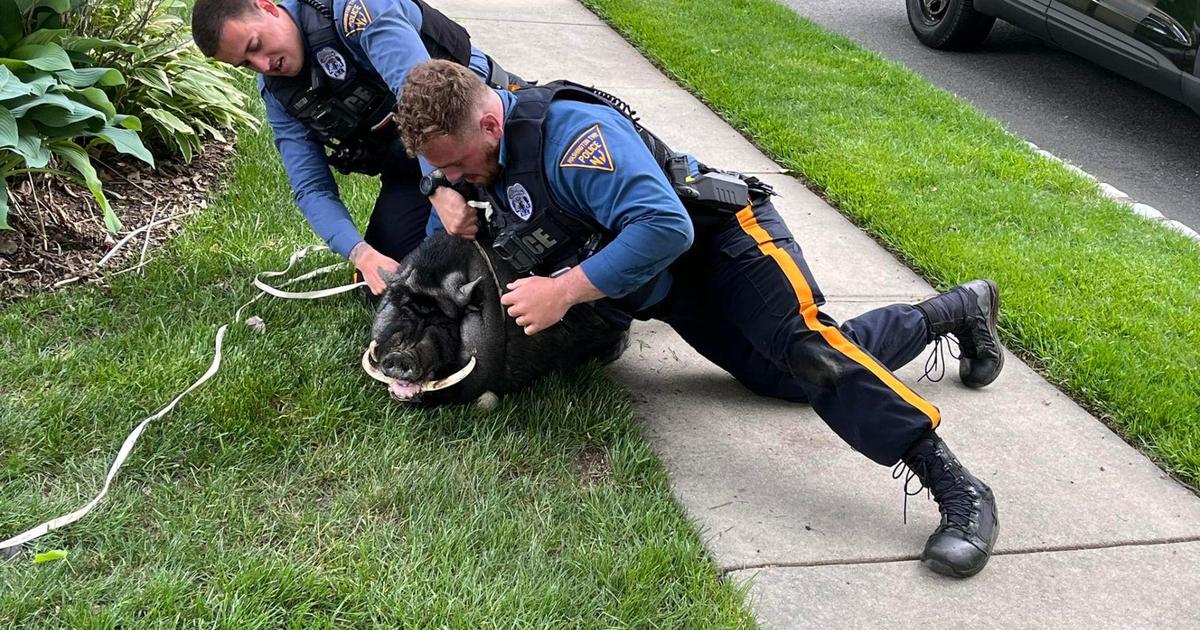AP: Engineer In Crash Had Undiagnosed Sleep Apnea
HOBOKEN, NJ (AP) -- The engineer of a commuter train that slammed into a station going double the 10 mph speed limit, killing a woman, suffered from undiagnosed sleep apnea, his lawyer said Wednesday, and a U.S. official told The Associated Press that investigators are looking at it as a potential cause.
The official, who was briefed on the investigation, spoke to The Associated Press on the condition of anonymity because they weren't authorized to discuss the matter.
Engineer Thomas Gallagher, 48, was diagnosed with severe sleep apnea after the Sept. 29 crash in Hoboken, attorney Jack Arsenault said in an email.
Investigators Recover 2nd Data Recorder From Hoboken Train Accident
Sleep apnea robs its victims of rest because they are repeatedly awakened as their airway closes and their breathing stops, leading to dangerous daytime drowsiness.
"The undisputed facts available to us immediately following this tragic accident led us to find and refer Tom to a specialist," Arsenault said. "The result of this diagnosis is a material fact in this inquiry to be assessed by people far more qualified than me."
Arsenault said the results were forwarded to investigators on Oct. 31. He said Gallagher underwent a physical in July and was cleared for duty.
The same condition went undiagnosed in the engineer of a commuter train that sped into a curve and crashed in New York City in 2013, killing four people.
NJ Transit said federal rules prohibited it from discussing specifics about the crash during the investigation.
1 Dead, Dozens Injured After Train Hits Wall At Hoboken Station
The agency has a sleep apnea screening program but said it is not authorized to discuss any employee's medical or personal information.
Another official briefed on the investigation said given the screening program, it's "not clear why he wasn't screened or if he was, how he passed."
A spokesman for the National Transportation Safety Board said the agency was not in a position to confirm specifics of the engineer's health.
"These are matters that are being looked at as part of the NTSB's comprehensive investigation of the Hoboken accident," said NTSB spokesman Christopher O'Neil.
The Federal Railroad Administration said it will issue a safety advisory in the coming days to "once again push railroads to address worker fatigue" and accelerate the installation of inward- and outward-facing cameras.
"FRA has long believed it is important for railroads to address worker fatigue more aggressively, and to implement a program that puts cameras in locomotives," said Matthew Lehner, public affairs director for the FRA. "While FRA has regulations in the works to address both of these challenges, railroads should not, and do not, need to wait to take action."
Gallagher, a NJ Transit engineer for about 18 years, told investigators he had no memory of the crash and only remembered waking up on the floor of the engineer's cab. He was pulled from the wreckage, treated at a hospital and released.
Gallery: Hoboken Train Accident
The throttle on the train went from idle to the fourth position, about half-power, 38 seconds before impact, and the speed increased to 21 mph, according to investigators. The throttle went back to idle and Gallagher hit the emergency brake about a second before crashing into a bumper at the end of the track.
Fabiola Bittar de Kroon, a 34-year-old lawyer and mother, was standing on a platform when she was killed by falling debris. More than 100 people were injured.
Gallagher told investigators he felt fully rested when reporting to work at 6:46 a.m. that day. He said the train operated normally and he remembered it was going 10 mph as he approached the station.
The NTSB recommended sleep apnea testing for engineers, and Metro-North and the Long Island Rail Road started requiring it after finding the engineer in the 2013 crash had fallen asleep at the controls because he had a severe, undiagnosed case of sleep apnea.
The engineer in that crash, William Rockefeller, told investigators he felt strangely "dazed" right before the crash, which occurred as he sped through a 30 mph curve at 82 mph.
(© Copyright 2016 The Associated Press. All Rights Reserved. This material may not be published, broadcast, rewritten or redistributed.)


